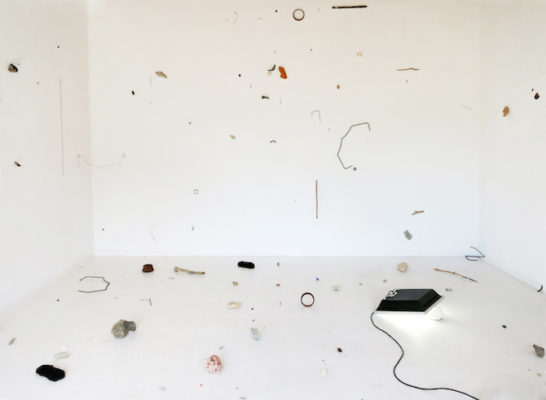Search
To search for an exact match, type the word or phrase you want in quotation marks.
A*DESK has been offering since 2002 contents about criticism and contemporary art. A*DESK has become consolidated thanks to all those who have believed in the project, all those who have followed us, debating, participating and collaborating. Many people have collaborated with A*DESK, and continue to do so. Their efforts, knowledge and belief in the project are what make it grow internationally. At A*DESK we have also generated work for over one hundred professionals in culture, from small collaborations with reviews and classes, to more prolonged and intense collaborations.
At A*DESK we believe in the need for free and universal access to culture and knowledge. We want to carry on being independent, remaining open to more ideas and opinions. If you believe in A*DESK, we need your backing to be able to continue. You can now participate in the project by supporting it. You can choose how much you want to contribute to the project.
You can decide how much you want to bring to the project.

Anna Dot’s short essay “Background Silence” articulates a politics of noise. Dot is listening for the noise that emerges in the censored expression, the interrupted passage, and the corrected error. For an exemplary practitioner, Dot’s essay points to Chicana poet Gloria Anzaldúa whose “Borderlands/La Frontera” (1989) foregrounds and explores from within the normalization of a standardized English the “noise” of the Chicana accent.[1] Noise presents the concrete specificity of silence – of the silenced – capable of its own speech.
Dot draws her central metaphor from Cage’s 4’33” and from cybernetics insofar as the two sources apparently challenge the possibility of pure silence. Full of acoustic nuances that accompany every expression, the communicational channel defies silence. That said, however, Dot appears from the beginning to be a little bored with the Cagean cliché: “We swallowed the idea that silence doesn’t exist thanks to the story he told us.” In fact, Cage’s 4’33” suggests a much more problematic picture than its conventional interpretation. The composition, which is championed as a liberatory embrace of noise as signal, makes no sense without the staging gesture of repression. That is to say, 4’33” is not the same as leaving open the living room window or handing the listener a stethoscope. The piece must be staged as the negation of anticipated sound. By analogy, in engineering, the very condition of possibility of communication is the simultaneous deployment and repression of noise, that is, the carrier wave.
If read precisely, Dot’s is not a simple ethics or politics of liberatory difference. It is one that confronts the paradoxical and structural role of negation. Her essay closes: “To remain silent is a right. Personally, day by day I am less able to fill the silences of others with words of my own because I am deafened by the noises they contain.” Silence exists as the force of the negative within noise. In a time when border walls are being planned to support transnational capital, the question to ask is not if there is noise in the clamoring silence at the border. Surely there is. The question is rather: Whose noise is it really? (That is, for whom is it “noise”?) Clearly it is not the noise of the so-called noisy. In the end, the question is not simply a matter of liberating noise from silence but rather of liberating, at least conceptually, the silence from the noise. For we cannot hear noise without its determinative silence.
Notes
[1] Gloria Anzaldúa, Borderlands/La Frontera (San Francisco : Aunt Lute Books, 2012).

Peter Freund is usually working on something else. He writes to avoid making art and makes art to avoid writing. He is a sometimes curator so as to avoid his own work, but usually that inspires him to write or make art. [www.peterfreund.art] Originally from the San Francisco Bay Area (USA), Peter moved to Barcelona in 2018 on an extended leave of absence from his post as Professor of Art at Saint Mary’s College of California. In 2018-19 he had a research residency with the Barcelona Museum of Contemporary Art (MACBA_CED) and a studio residency with the Werner Thöni Artspace. His curatorial project, Retracted Cinema, was presented at Xcèntric (CCCB) in September 2020 and will be followed by a forthcoming article about the program in Found Footage Magazine in 2021. Peter is a visiting artist with the Faculty of Fine Arts at the University of Barcelona, 2018-Present, and a founding member of the Barcelona-based artist collective, Adversorecto, 2020.
"A desk is a dangerous place from which to watch the world" (John Le Carré)